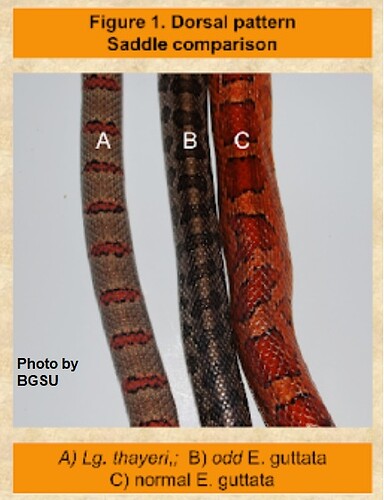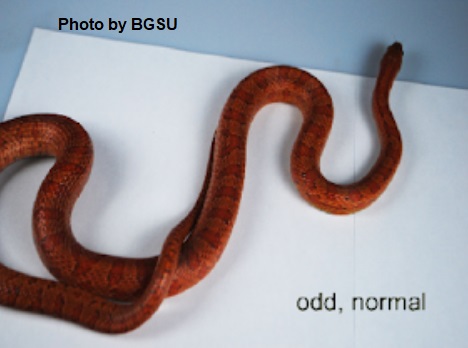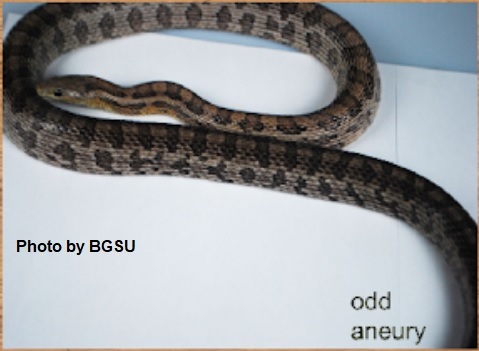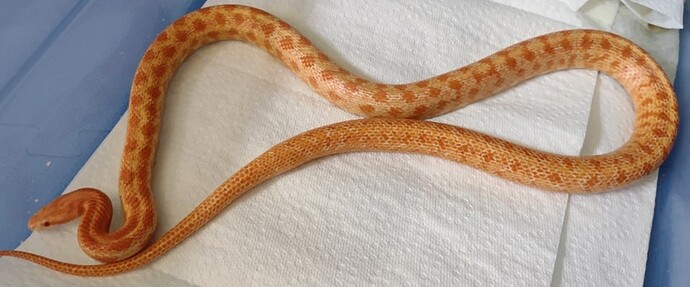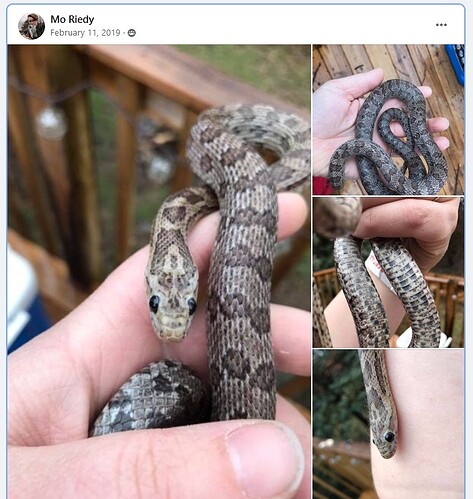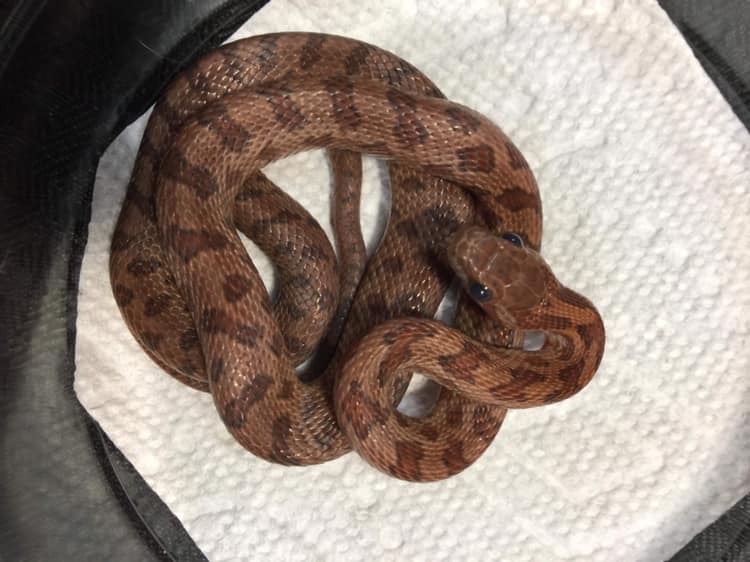Facts
The “Odd” corn snake morph was randomly produced by BGSU in 2005, then proven to be recessive by BGSU in 2012.
It is mostly characterized by very thin saddles, but also sometimes displays a slightly higher color saturation - especially near the head (similar to Kastanie).
Detailed info from BGSU here: Odd Morph Information BGSU - Google Drive
Species:
Pantherophis guttatus
Name of Gene:
Odd
First produced by whom:
Eileen Underwood of BGSU
Year First Produced:
2005
Genetics Type (Incdom/Codom/Recessive/Polygenic/etc):
Simple Recessive
In complex with other genes?:
No
Other names/aliases for it?:
None
Description:
Saddles mostly appear as thin stripes across the top of the body; they can also appear as spots along the edges of the top of the body - this is especially true toward the tail. Sometimes the saddle blotches disappear entirely near the tail. Saddle borders are nearly nonexistent. Slightly higher saturation near the head.
Appearance; What it does/looks like?
- Head: No change
- Body: Thin saddles blotches, saturation fade from head to tail.
- Belly: No change
- Tail: Saddle blotches either appear more spot-like, or sometimes disappear entirely by the tail.
Proven Lines: n/a
Related Genes: n/a
Proven: To what degree it is proven out to not just be polygenic?
Proven recessive through nearly 2 decades of breeding trials by BGSU with no doubts of its inheritance.
Unique: Why do you believe this is a new morph and not an existing one?
Aside from a single wild-caught corn snake originally called “Stillman” (which was proven to not be reproducible), no other single-gene mutation in corn snakes display this thinning & breaking apart of the saddle patterns to nearly the degree of the Odd mutation.
Problems: Any problems?
Fertility of visible-Odd corns is slightly lower on average than non-Odd corns.
History: The history behind its discovery?
Dr. Underwood of Bowling Green State University hatched the first Odd in their corn snake breeding program in 2005, then proved it recessive in 2012, and continue to do trials on the morph to the present day.
Disagreement or Controversy:
Presumably due to the difficulty of getting female Odds up to typical breeding size, Odd & het Odd females died more frequently of egg-binding in the BGSU study than non-Odds. Odd and het Odd corn snakes tend to grow much slower than average. While corn snakes typically grow an average of 1ft per year for 3-5 years, Odd and het Odd corns take 5-7+ years on average to hit the optimal target weight for breeding (females specifically).
References here on the community:
- At least one link to community discussion (ie forums) to demonstrate community
https://www.youtube.com/watch?v=hqA757S3xOA
